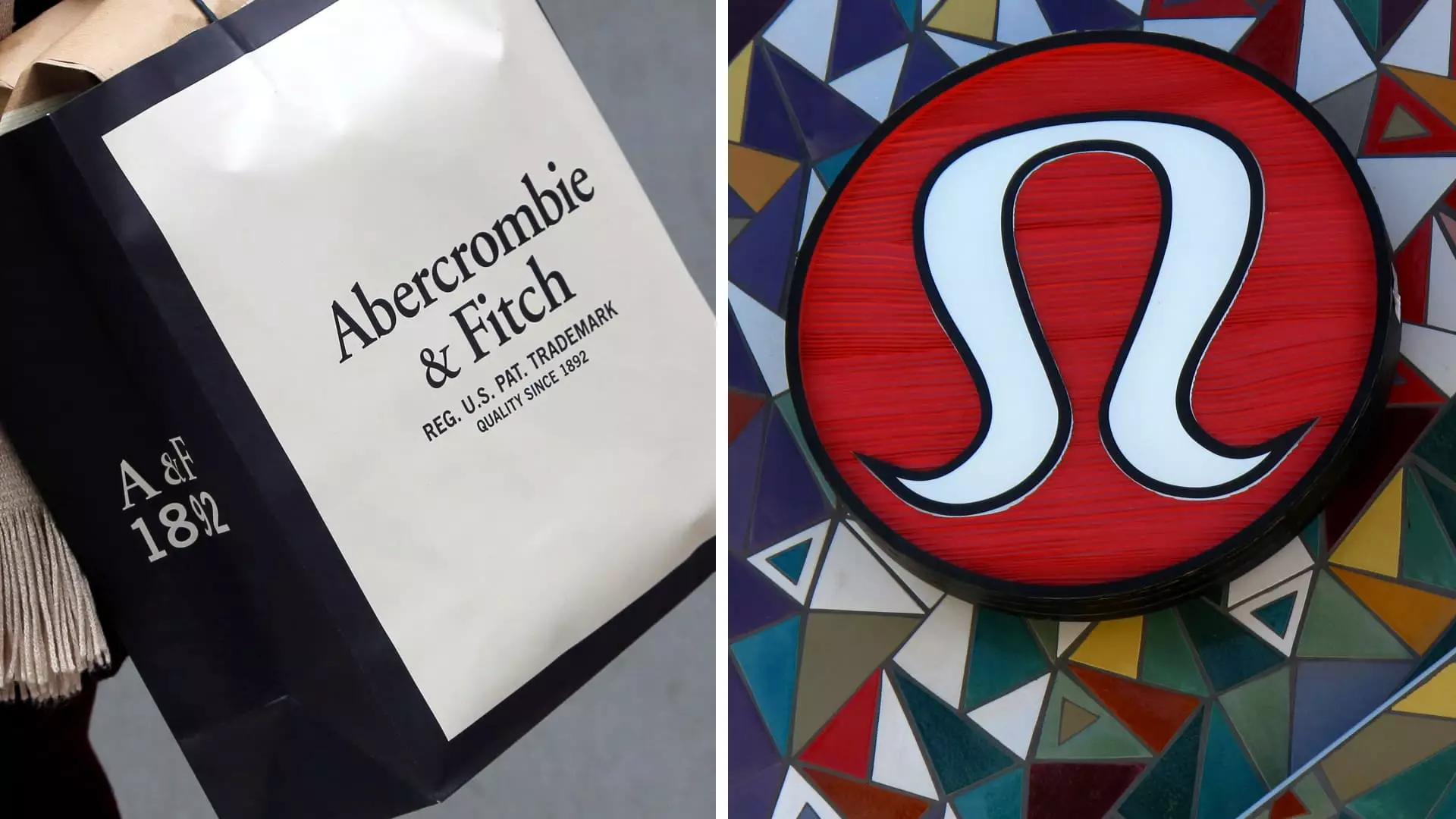The holiday season is traditionally a pivotal time for retailers, setting the stage for the financial performance in the year ahead. In a recent display of this, big-name retailers based in the United States released their early holiday results, revealing a complex narrative that stirred investor sentiment. Despite largely positive figures, the stock prices of these companies exhibited a notable decline, prompting questions about the broader retail landscape and consumer behaviors post-pandemic. This article analyzes the financial reports of several prominent retailers, their growth trajectories, and what they hint about the retail market dynamics.
On Monday, notable retail players such as Lululemon, Abercrombie & Fitch, Urban Outfitters, and American Eagle provided updated forecasts for their fourth-quarter performance. These outlooks largely exceeded initial expectations as retailers capitalized on consumer enthusiasm during the crucial holiday shopping period. For instance, Lululemon managed to increase their sales growth projection to a range of $3.56 billion to $3.58 billion, reflecting an impressive response from consumers to their product lines.
However, the stock market exhibited a starkly different reaction to these updates. Many of these retailers saw their share prices drop, often by more than 5%, as investors responded tepidly to what appear to be solid earnings. This irony underscores a key characteristic of the current market: strong operational performance does not always correlate with stock price appreciation. Many investors may have expected much more, possibly due to the exceptional growth seen during the recovery period from the COVID-19 pandemic.
Abercrombie’s Sluggish Growth amidst Rising Expectations
Abercrombie & Fitch stands out within this narrative, revealing an elevated, if cautious tone concerning its growth trajectory. While the company did increase its sales growth outlook to between 7% and 8%, this figure is a significant decrement from the previous year’s impressive 21% increase during the holiday season—a testament to the company facing tougher year-over-year comparisons. The shift in expectations raises questions about the sustainability of Abercrombie’s resurgence after past struggles.
CEO Fran Horowitz’s comments clearly articulate a strategy shift, underscoring a newfound priority on profitability over expansive revenue growth. This pivot, while prudent, signals a recognition that the circumstances which propelled the brand’s growth are evolving. Investors may take a wait-and-see approach as the company implements its revised focus, balancing immediate performance pressures with long-term strategic goals.
The Divergent Path of Urban Outfitters and Macy’s
Urban Outfitters also reported a healthy 10% increase in net sales for the month ending December 31, reflecting robust consumer interest. However, the company’s performance is not uniformly positive; the flagship Urban brand struggled, marking a 4% decline in comparable sales. This disparity within its portfolio emphasizes the shifting preferences of shoppers, revealing that while some brands within the company thrive, others languish under competitive pressures.
Contrastingly, Macy’s provided a sobering update, hinting at difficulties that were more pronounced than anticipated, projecting sales figures that would likely fall below earlier targets. Such revelations, compounded by a nearly 6% drop in its shares, illustrate the divergent paths of these retailers and highlight how broader economic challenges—like inflation and changing consumer habits—remain critical variables affecting their performances.
American Eagle also adjusted its fourth-quarter forecast upward, though it faces unique challenges tied to its fiscal calendar, which will ultimately impact its annual performance. These shifts pinpoint the intricacies of financial forecasting in retail, where external conditions, including timing shifts and macroeconomic factors, can skew projected financial outcomes. Despite an anticipated drop in total revenue, the company’s approach towards maintaining profitability resonates positively in a market cautious of unfettered growth.
The broader context of the holiday shopping season reflects nuanced trends. While the National Retail Federation has forecasted modest growth, MasterCard SpendingPulse reported a year-over-year increase in holiday retail sales of 3.8%. Such statistics indicate that while consumer spending remains relatively stable, real growth adjusting for inflation could be negligible.
Overall, this holiday season has yielded a mixed performance for major U.S. retailers. With increasing projections and often disappointing market reactions, stockholders are grappling with the signals sent by the retail sector. As companies adapt to evolving consumer demands, the focus appears to be shifting from rapid growth to a more sustainable and profitable business model. This cautious optimism in the face of uncertainty underscores the complexity of the retail landscape as industry players navigate a post-pandemic recovery while wrestling with inflation and changing consumer expectations. As we look ahead, monitoring how these strategies unfold will be crucial not just for retail investors, but for understanding the broader economic climate in which these companies operate.

